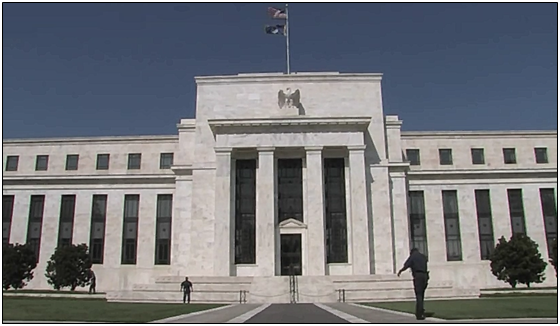The Federal Reserve has increased its holdings of mortgage-backed securities dramatically since Oct. 2012 by almost $1 trillion, from $834 billion to $1.77 trillion today.
That was at the time the third round of quantitative easing began. By the time the Fed’s taper was supposedly over in Oct. 2014, that number was already up to $1.69 trillion. And now it’s almost $100 billion above that.
Why has the Fed been expanding its MBS holdings if the quantitative easing programs are supposed to be over?
The entire time, since the end of the so-called “taper,” the Fed has maintained that it is “reinvesting principal payments from the Federal Reserve’s holdings of agency debt and agency MBS in agency MBS and of rolling over maturing Treasury securities at auction.” It’s been saying that for 3 years now. But who have they been buying from?
Based on data released by the Federal Reserve from the last Fed audit ordered in the 2010 Dodd-Frank legislation, of the $1.25 trillion of MBS bought by the Fed, foreign entities sold some $442.7 billion at the height of the program to the Fed. According to the Fed, the securities were purchased at “Current face value of the securities, which is the remaining principal balance of the underlying mortgages.”
That included $127.5 billion given to MBS Credit Suisse for the junky securities, $117.8 billion to Deutsche Bank, $63.1 billion to Barclays Capital, $55.5 billion to UBS Securities, $27 billion to BNP Paribas, $24.4 billion to the Royal Bank of Scotland, and $22.2 billion to Nomura Securities. Another $4.2 billion was given to the Royal Bank of Canada, and $917 million to Mizuho Securities.
This raises the obvious question if foreign banks were again the major beneficiaries of the central bank’s quantitative easing programs from 2012 to present.
Of course, without another audit, it is impossible to see who the Fed was actually buying from.
Was it Europe to bail them out as the sovereign debt crisis reached its peak? Or emerging markets as that bubble was collapsing? Or to simply juice the U.S. housing market along because there still is not much of a market for MBS? Or all three? Naturally, there’s no way to really tell, but the past is prologue.
If QE3 was really about fostering domestic financial conditions — the central bank claimed “The purchases were intended to lower longer-term interest rates and contribute to an overall easing of financial conditions” — then one imagines it wouldn’t have included hundreds of billions of more dollars for overseas banks.
That is why Americans for Limited Government has been a strong supporter of Sen. Rand Paul’s (R-Ky.) Fed audit legislation. Now is the time for the Trump administration to find out what happened during QE3, taper and still ongoing today. The mortgage-backed securities purchase programs and quantitative easing were only ever supposed to be temporary but now they are almost a decade old.
Sen. Paul has again reintroduced the legislation, with companion legislation offered by U.S. Rep. Thomas Massie (R-Ky.).
“The U.S. House has responded to the American people by passing Audit the Fed multiple times, and President-elect Trump has stated his support for an audit. Let’s send him the bill this Congress,” Paul said in January.
When is the Fed planning on selling these assets back to investors? Is there even a market for them to do so?
The American people have a right know what’s being done with their money and whether almost 10 years after the financial crisis, the system is any better off — and if we’re still bailing out the entire world’s financial system. Without another audit, there’s no way to tell.
Robert Romano is the senior editor of Americans for Limited Government.







